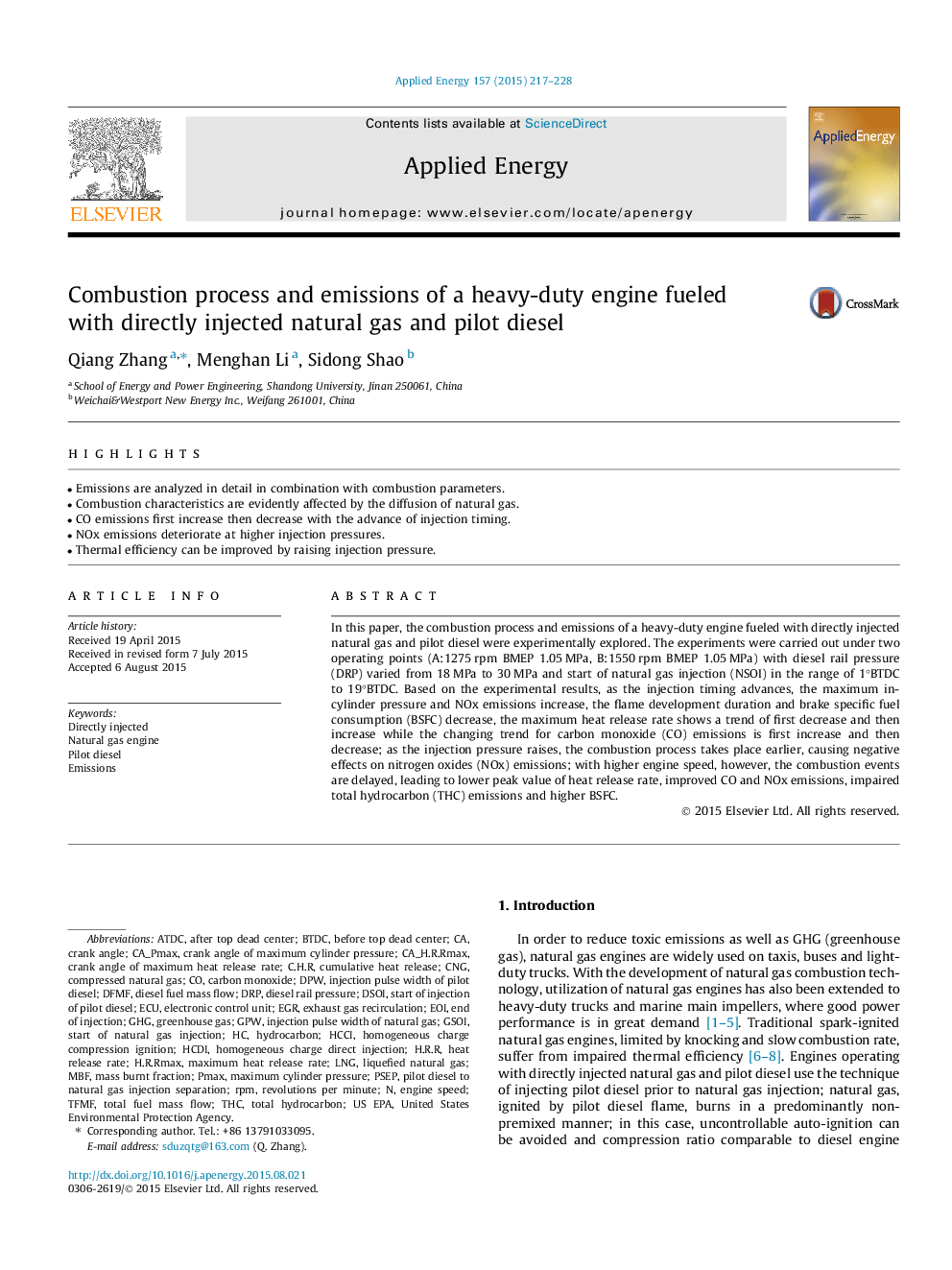| Article ID | Journal | Published Year | Pages | File Type |
|---|---|---|---|---|
| 6685885 | Applied Energy | 2015 | 12 Pages |
Abstract
In this paper, the combustion process and emissions of a heavy-duty engine fueled with directly injected natural gas and pilot diesel were experimentally explored. The experiments were carried out under two operating points (A:1275 rpm BMEP 1.05 MPa, B:1550 rpm BMEP 1.05 MPa) with diesel rail pressure (DRP) varied from 18 MPa to 30 MPa and start of natural gas injection (NSOI) in the range of 1°BTDC to 19°BTDC. Based on the experimental results, as the injection timing advances, the maximum in-cylinder pressure and NOx emissions increase, the flame development duration and brake specific fuel consumption (BSFC) decrease, the maximum heat release rate shows a trend of first decrease and then increase while the changing trend for carbon monoxide (CO) emissions is first increase and then decrease; as the injection pressure raises, the combustion process takes place earlier, causing negative effects on nitrogen oxides (NOx) emissions; with higher engine speed, however, the combustion events are delayed, leading to lower peak value of heat release rate, improved CO and NOx emissions, impaired total hydrocarbon (THC) emissions and higher BSFC.
Keywords
aTDCPmaxTHCGHGECUHCCIRPMLNGEGRDpWCNGEOIMBFPSEPDRPbTDCUS EPAUnited States Environmental Protection AgencyEmissionsafter top dead centerCrank Anglerevolutions per minuteEngine speedHomogeneous Charge Compression Ignitionbefore top dead centercarbon monoxideNatural gas engineHeat release ratehydrocarbonelectronic control unitEnd Of Injectiontotal hydrocarboncompressed natural gasLiquefied natural gasGreenhouse gasexhaust gas recirculation
Related Topics
Physical Sciences and Engineering
Energy
Energy Engineering and Power Technology
Authors
Qiang Zhang, Menghan Li, Sidong Shao,
